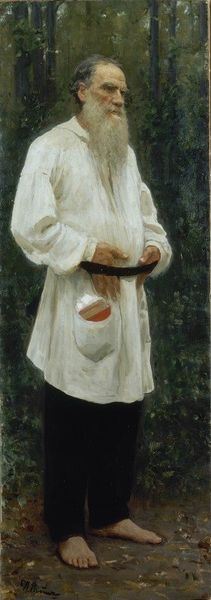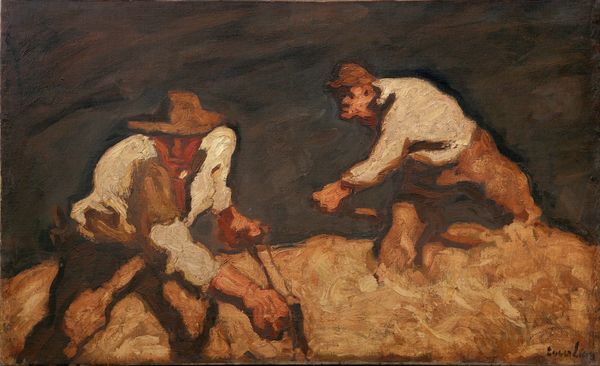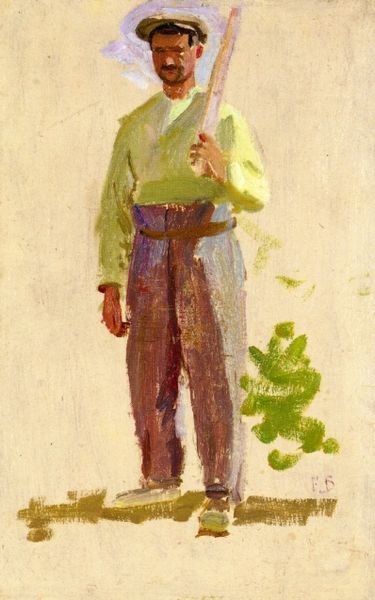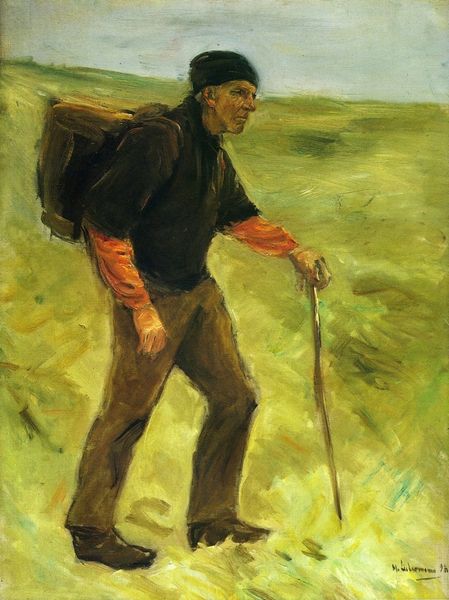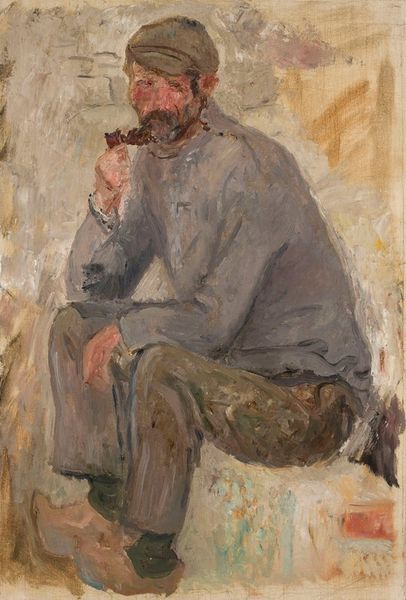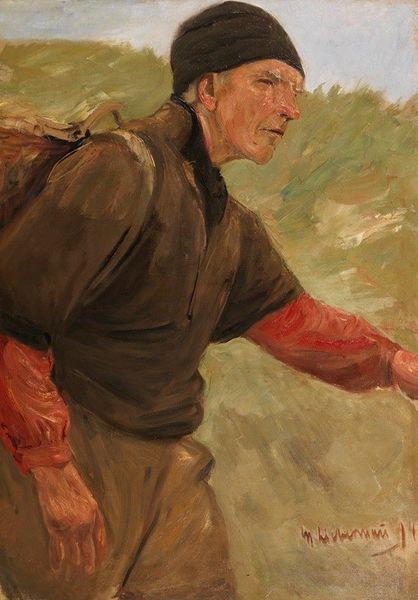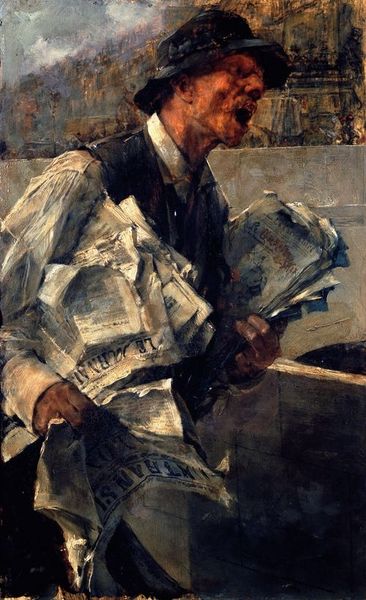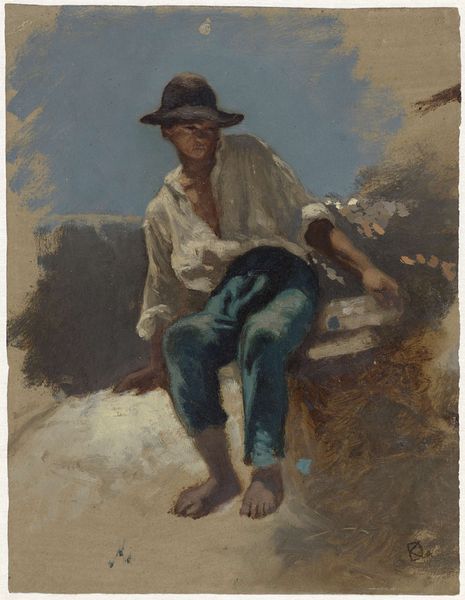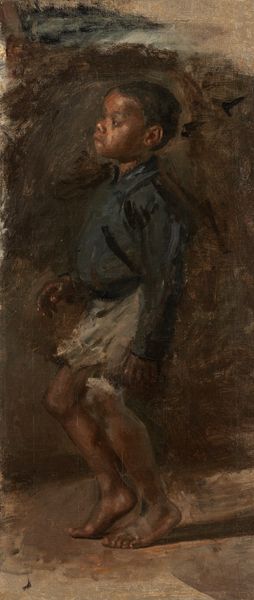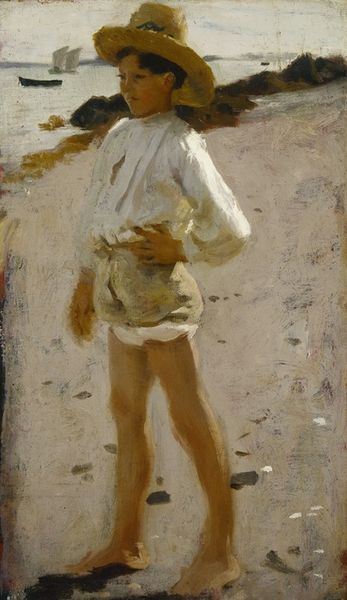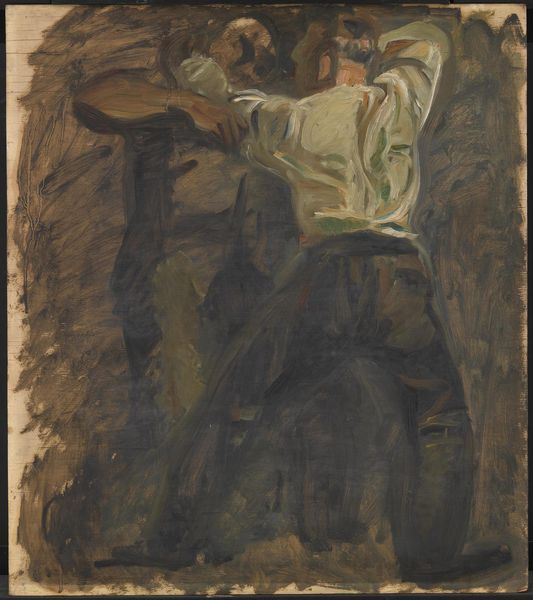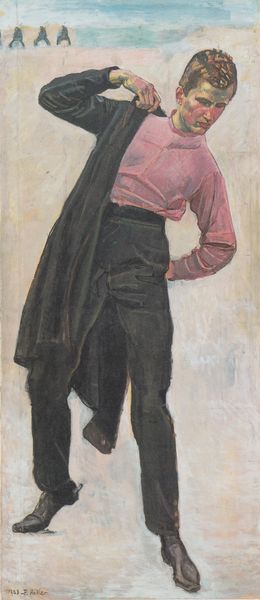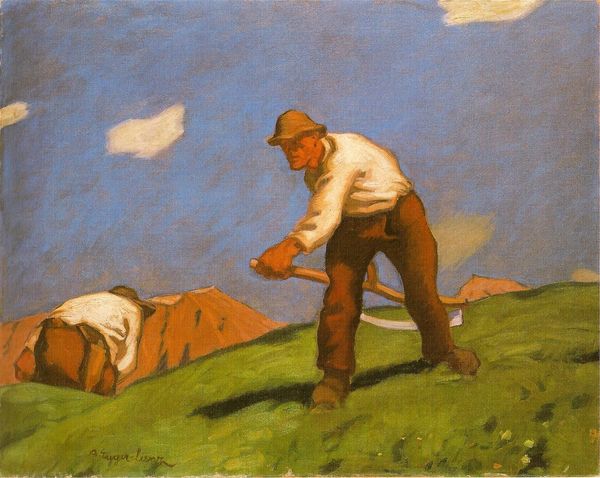
painting, oil-paint, impasto
#
portrait
#
painting
#
oil-paint
#
oil painting
#
impasto
#
expressionism
#
genre-painting
#
modernism
#
realism
Dimensions: 111 x 126 cm
Copyright: Public domain
Curator: Here we have Albin Egger-Lienz's 1908 painting, "The Sower." It resides in a private collection, capturing a timeless scene through oil on canvas. What are your immediate impressions? Editor: Stark, isn’t it? I feel this odd mix of exhaustion and expectation. He's caught in this perpetual motion, casting seeds, yet there's something weighty, almost solemn, in the posture. The creamy ground evokes parched land but for the gesture of his sowing hand, the painting feels inert. Curator: That solemnity is key. Egger-Lienz wasn’t just painting a genre scene; "The Sower" symbolizes the arduous, cyclical nature of life. Consider how the sower is the conduit between earth and future harvest. His stooped posture embodies a humble burden and continuous human engagement with earth. Editor: That hand really draws my eye. It's massive and slightly off, but not unpleasantly so. You get the sense of immense manual labor. The artist isn't idealizing some bucolic paradise here. It’s toil, etched onto his features and into those weathered hands. Curator: Yes, that exaggeration in the hand links to much older symbolic conventions—the hand as giver, provider. What seems like a basic observation of reality is, upon reflection, fraught with coded references. Notice the stark, earthy palette—restricted ochre, creams, browns – suggestive of elemental existence, without much luxury. Editor: It’s the kind of painting that creeps under your skin. It doesn't shout at you. It quietly insinuates its message. All these muted earth tones set the stage for reflection, or meditation even, about our connection to land, labor, and legacies we leave behind. Though painted with impasto textures that suggest the gritty work of life, it feels, somehow, detached. Curator: That detachment could be read as commentary too, on the increasing distance between the viewer, typically urban, and agricultural realities. "The Sower," therefore, becomes not only a depiction but also a prompt to consider that distance. Editor: Good point. I find I want to pull the figure forward or transport myself into that timeless field... It’s a call back and forward all at once! Curator: Precisely. "The Sower" resonates beyond mere depiction. Its symbols reverberate with agrarian continuity and prompt contemplation on humanity's symbiotic existence with the soil. Editor: A humbling perspective. Thanks for walking me through this, illuminating these potent, deeply set roots!
Comments
No comments
Be the first to comment and join the conversation on the ultimate creative platform.
